
Optimizing Supplier
Value Management
How Procurement and Supply Chain Leaders Can Use New Sourcing Capabilities to Improve Their Supplier Relationships


Executive Summary
Vendor value management is now an essential process for procurement and supply chain leaders. It helps them ensure that the right suppliers are selected, that suppliers are providing the right products and prices, and that suppliers are meeting performance expectations in a way that produces value for both parties. Unfortunately, many organizations struggle to overcome the challenges and pain points associated with their current supplier management solutions, or lack thereof.
Manual and paper-based processes are still a struggle for many procurement organizations, and they can directly impact efficiency. Some organizations also lack critical functions in their tools, such as reverse auction capabilities, drag-and-drop building and design functions, and automatic response and aggregation. Lacking these capabilities can lead to inefficiencies, but it can also cause the
organization to miss opportunities to generate additional supplier value through its vendor relationships.
This report analyzes the most significant challenges faced by organizations when using their sourcing solutions. Here, we’ll explore how companies can optimize their supplier value management processes by implementing solutions that grant them visibility, automation, and opportunities for engagement.
Want to reference this later? Download this page as a PDF!
About the Respondents
The WBR Insights research team surveyed 100 procurement, sourcing, and supply chain leaders from across the U.S. and Canada to generate the results featured in this report.
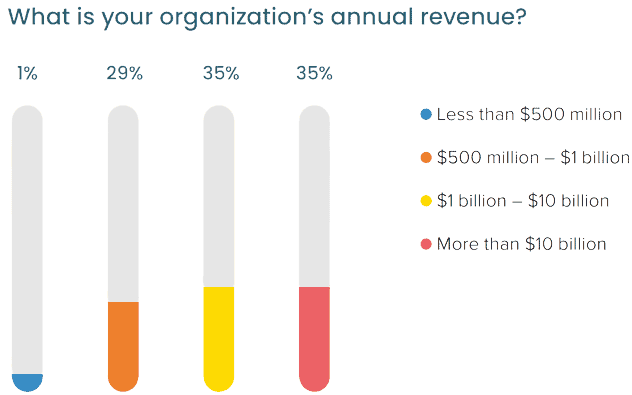
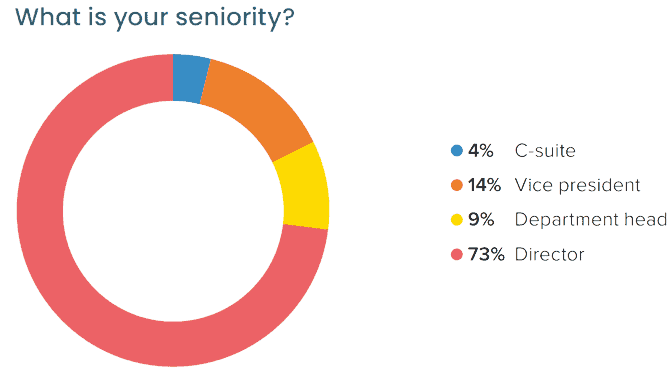
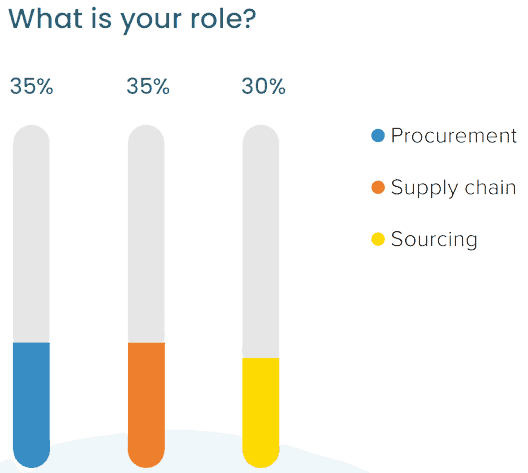
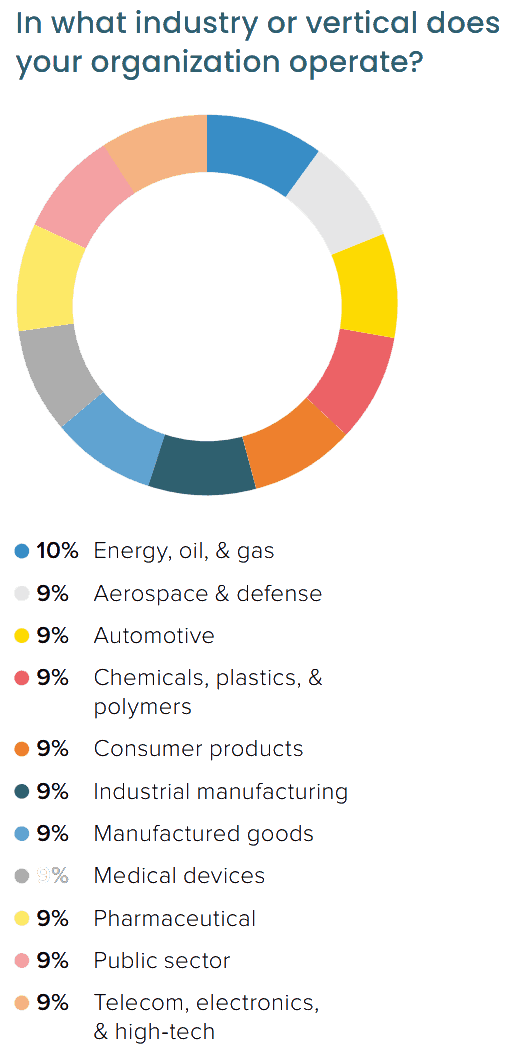
Key Insights
Among the respondents
Some Companies Are Missing Key
Strategic Sourcing Capabilities
Strategic sourcing is a process that helps organizations identify and select the best suppliers based on several factors, including cost, quality, and speed. A strategic sourcing solution should support this process by providing the ability to quickly find and compare suppliers, request quotes, and run reverse auctions. Acquiring and leveraging supplier data is key to obtaining this type of visibility.
However, many organizations lack key capabilities in their strategic sourcing solutions, such as the ability to quickly find suppliers, compare supplier value, and request quotes and proposals. The ability to run successful strategic sourcing events is now paramount to the organization’s ability to generate value at cost.
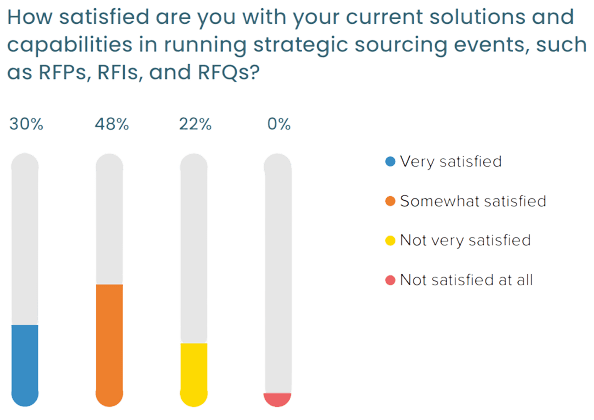
Based on the results of this study, most of the respondents are either somewhat satisfied (48%) with their current solutions and capabilities for running strategic sourcing events, or they are not very satisfied (22%). Only 30% of the respondents are very satisfied with their current ability to run RFPs, RFIs, and RFQs.
These capabilities are essential for a successful strategic sourcing process, and without them, organizations are at a disadvantage. They may miss out on opportunities to save money or improve quality, and they may have difficulty managing their supplier relationships.
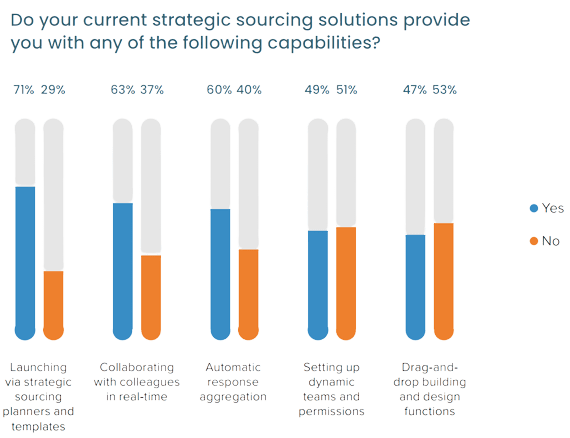
Too many organizations are also lacking specific capabilities that can aid in their strategic sourcing initiatives. Although some capabilities, like automation, were once simply “nice to have,” they are now essential to remaining competitive in today’s supply chain environment.
For example, most of the respondents (53%) use strategic sourcing solutions that don’t provide them with drag-and-drop design functions for building supplier portals, RFP sites, and other interfaces. Most (51%) also can’t set up dynamic teams and permissions with their tools, while 40% can’t engage in automatic responses.
A lack of these types of capabilities means that they become manual processes. This can significantly slow down sourcing operations, when time is crucial.
Organizations must analyze their current strategic sourcing solutions to determine if they are experiencing these types of capability gaps. Replacing or augmenting their solutions may be paramount to remaining competitive.
What steps could your organization take in the next 12 months to improve supplier visibility, performance, engagement, and cost reduction?
“We plan to bring in faster data processing tools and support our suppliers with those tools to remain connected with them on all fronts.”
VP of Procurement // Telecom Company
Not Enough Companies Are
Capable of Reverse Auctions
Reverse auctions are important for procurement functions because they help buyers save significantly on sourcing. A reverse auction is a type of auction in which the roles of the buyer and seller are reversed.
By soliciting bids from multiple suppliers, buyers can drive down the price of the good or service. Additionally, reverse auctions help to increase competition among suppliers, which can lead to better quality products and services.
To conduct a successful reverse auction, buyers need to have a good understanding of the market and the suppliers who participate in it. This requires a significant amount of visibility, as well as tools that enable the buyer to collaborate with suppliers.
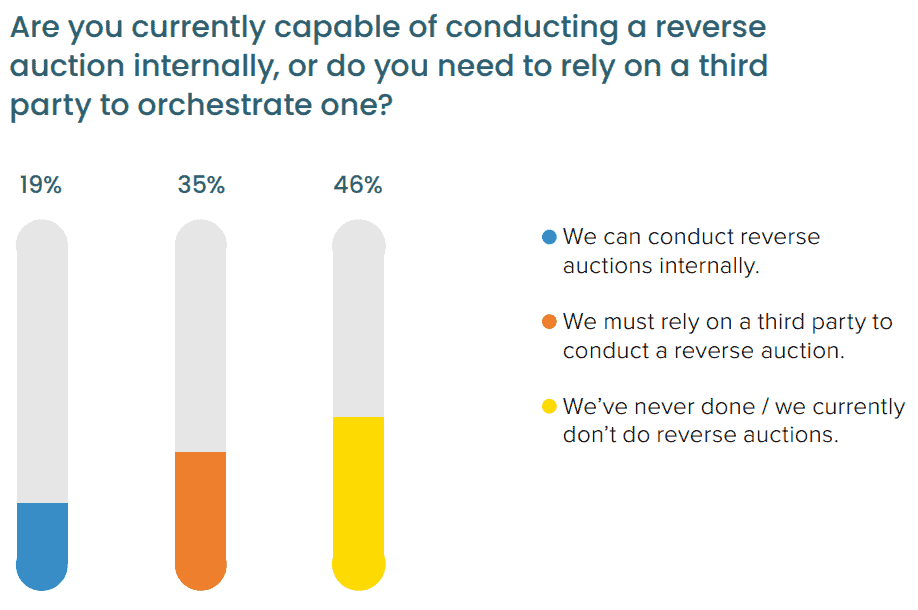
According to the study, almost half of the respondents (46%) have either never done a reverse auction or currently don’t do them. Another 35% rely on a third party to conduct a reverse auction.
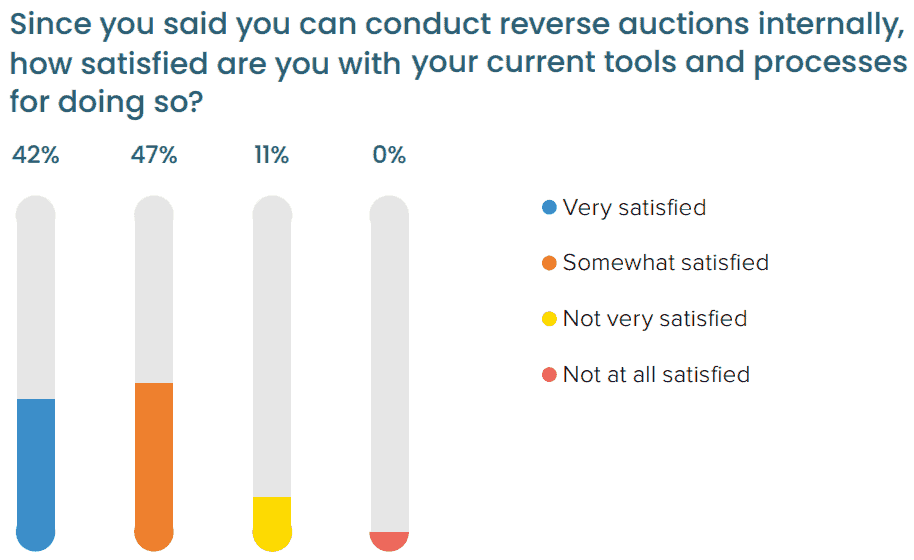
Most of the respondents who conduct reverse auctions internally are at least somewhat satisfied with their current tools and processes for doing so. Likely, these respondents use software that makes conducting reverse auctions fast and simple. The best solutions are customizable, are easy to use, and work in real-time, providing dynamic bid rankings and real-time bid displays.
Reverse auctions can be challenging to conduct without a solution or a partner who specializes in them. However, new procurement technologies make it much more feasible for organizations to conduct reverse auctions internally. This could enable them to shorten price negotiations significantly and optimize savings.
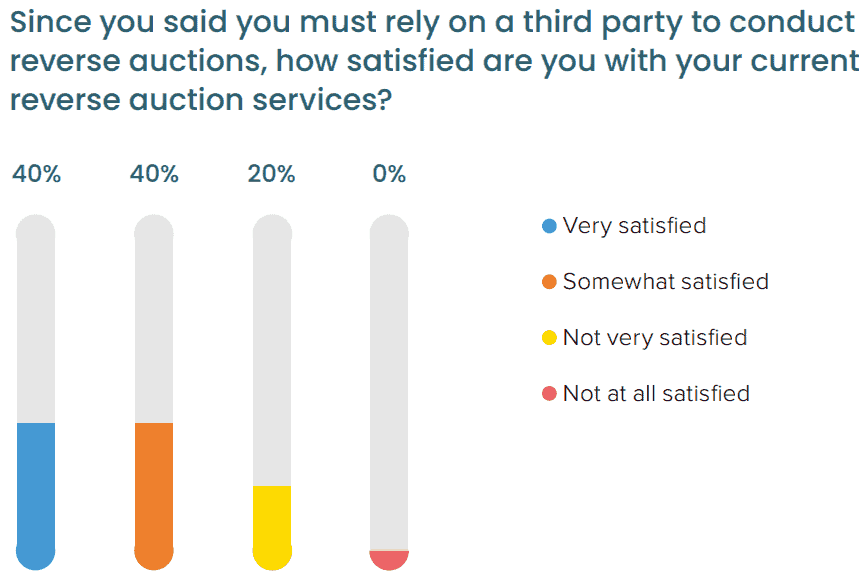
Most of the respondents who rely on a third to conduct reverse auctions are also at least somewhat satisfied. However, 20% say they are not very satisfied with their current reverse auction services. That’s a 9% increase compared to the respondents who can conduct reverse auctions internally.

Sourcing directory, manufactured goods company
What steps could your organization take in the next 12 months to improve supplier visibility, performance, engagement, and cost reduction?
“We will bring suppliers onto the same platform that we are using to remain seamlessly connected to them and improve performance.”
Manual Processes and Data Sorting Are Formidable Challenges
Efficient vendor onboarding and information management are critical to the success of any organization. They ensure that new suppliers are quickly integrated into the company’s existing vendor management processes and systems. This way, suppliers can start generating value faster and continue to do so as the business evolves. Furthermore, effective information management allows for a more streamlined vendor management experience by reducing the need for manual data entry and tracking.
Supplier onboarding and information management can be complex and time-consuming without the right tools and processes. It can be difficult to get new suppliers up to speed on your company’s procedures and processes without all your supplier information at your fingertips.
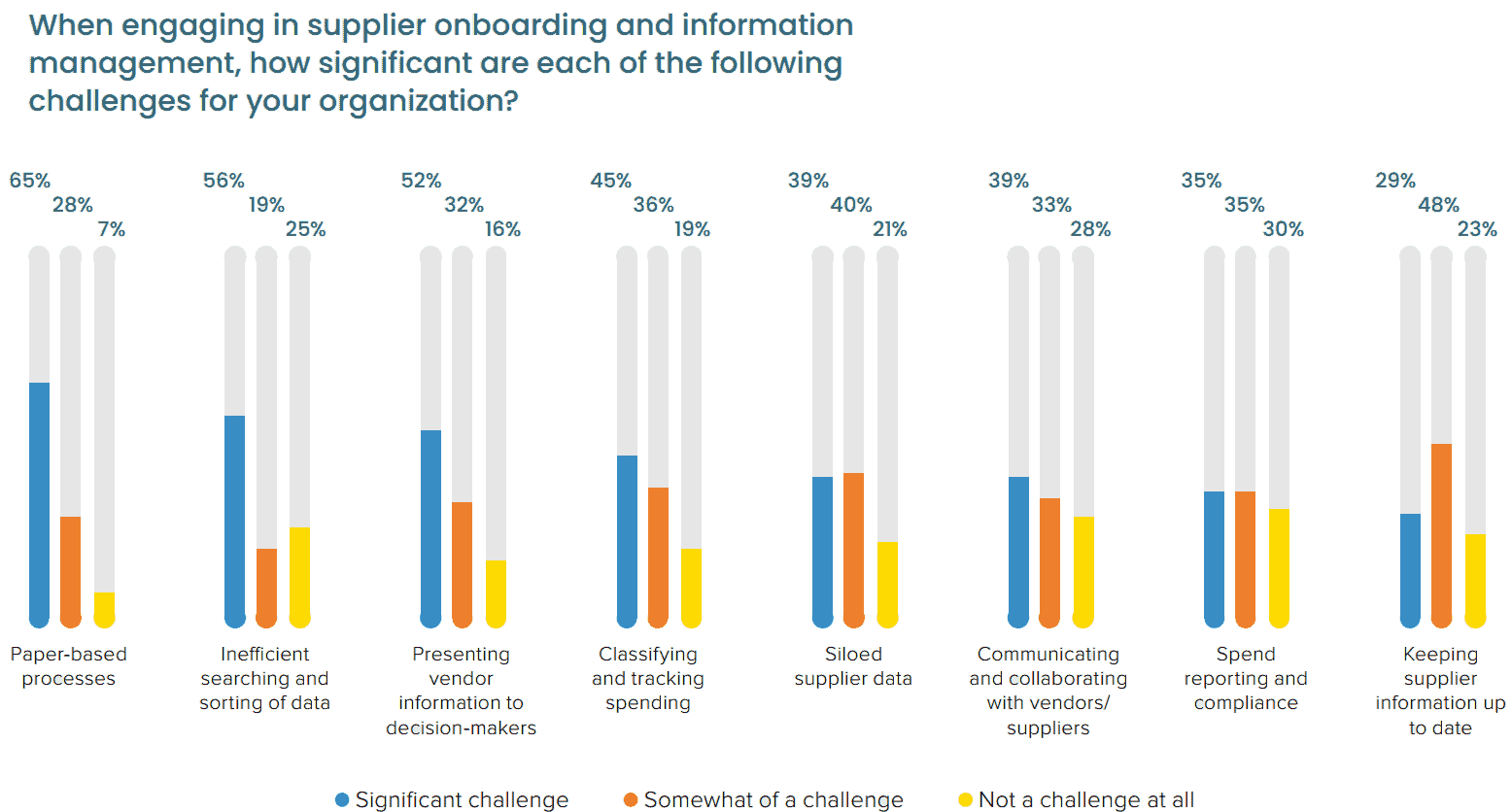
Currently, most of the respondents say paper-based processes, inefficient data searching and sorting, and presenting vendor information to decision-makers are the most significant challenges they’ve experienced with supplier onboarding
and information management. These respondents likely don’t have the solutions they need to introduce automation into these processes. They may also lack robust and simplified reporting capabilities, as these would make it easier to search
for relevant data and generate reports for decision-makers.
Notably, about half of the respondents (48%) say keeping supplier information up to date is somewhat of a challenge. Another 29% say this is a significant challenge.
Organizations need a customizable interface that enables them to collect information from vendors and suppliers automatically. This is critical for monitoring vendor performance, but it could also improve vendor compliance over time
as well.
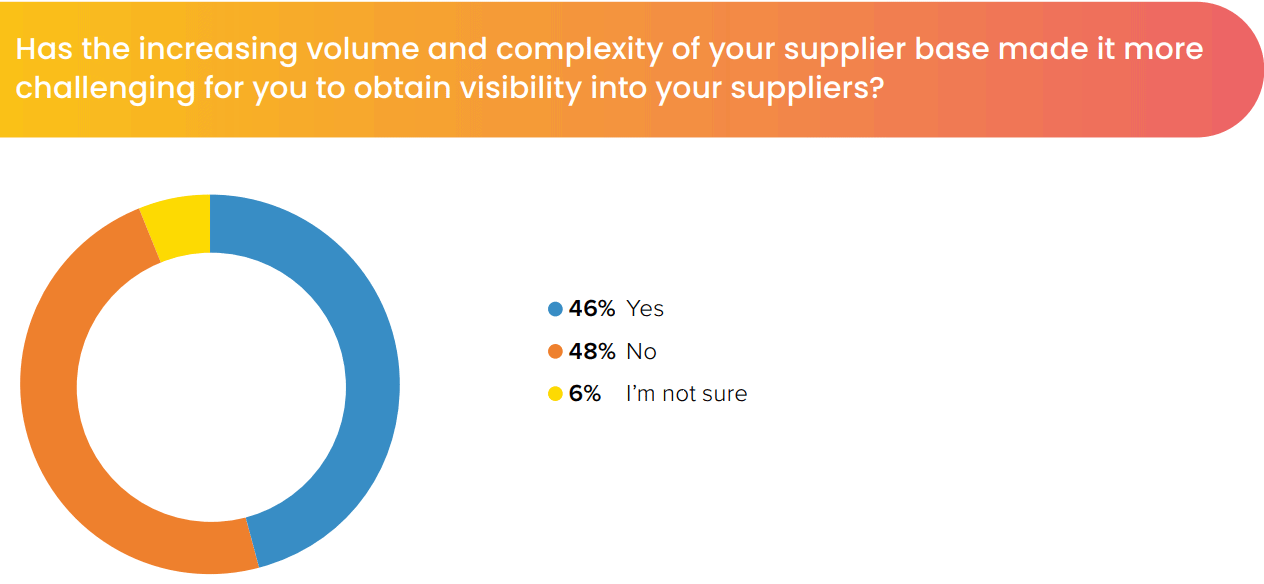
Furthermore, supplier management is only going to increase in complexity for some organizations, especially those that must source goods and materials from multiple suppliers to power their operations. According to the study, almost half of the respondents (46%) say the increasing volume and complexity of their supplier bases have made it more challenging to obtain visibility into their suppliers.
This type of challenge can occur when the supplier base expands quickly, but the company’s tools and processes for managing suppliers aren’t scalable.
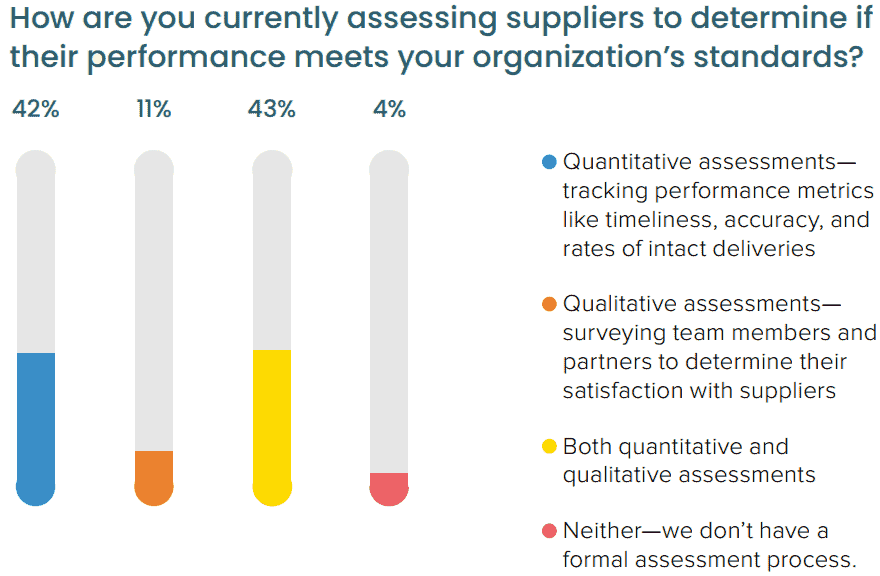
With the right tools, procurement teams can effectively manage their entire supplier base regardless of size. Their supplier value management solution should be able to grant them visibility into their suppliers, but it should also go further.
Organizations need a way to monitor their suppliers’ performance and generate intelligence that can be used in negotiations. More importantly, they need features that allow them to align their supplier relationships with their business objectives.
An ideal tool would allow companies to conduct fast but meaningful assessments of their suppliers when needed. These assessments must be qualitative—based on the metrics associated with supplier success—and qualitative—based on the effectiveness with which suppliers work with the company and the satisfaction of internal team members.
Currently, almost half of the respondents (43%) conduct both quantitative and qualitative assessments. However, most of the respondents either conduct only quantitative assessments (42%) or qualitative assessments (11%) alone. Another 4% conduct no assessments at all.
Procurement director
public sector organization
What steps could your organization take in the next 12 months to improve supplier visibility, performance, engagement, and cost reduction?
“Connecting all our supplier data resources. This way we will have better visibility and will be able to engage and look for cost reduction opportunities.”
Conclusion: Value Management at Your Fingertips
As the vendor landscape continues to rapidly evolve, organizations need to keep up to date on the latest industry trends and best practices. For example, capabilities like reverse auctions are a powerful way to encourage suppliers to compete and reduce costs, but they can’t be effective without visibility into the supplier base. Most companies need enhanced visibility so they can put more value-added capabilities at their fingertips.
Companies should consider investing in new technologies that can help them overcome common supplier value management challenges. By doing so, they will be better positioned to improve vendor performance and drive greater value for their organizations.
New vendor management solutions can help organizations to streamline processes, reduce costs, and improve communication with suppliers by onboarding them onto a single platform. Technologies like supplier value management software will be critical to achieving these goals in the future.
Key Suggestions
About the Authors

Vendorful provides deep visibility into vendor performance, engagement, and costs, inside an easy-to-use suite of tools to optimize your supply base. We have developed the first Vendor Lifecycle Management (VLM) solution — a product that augments and automates key procurement and finance processes. In our conversations with procurement, supply chain, vendor management, and AP teams, we identified a common set of problems which are largely unaddressed by existing P2P and ERP products. And now we’ve developed a solution to address those specific challenges.
For more information, please visit vendorful.com

WBR Insights is the custom research division of Worldwide Business Research (WBR), the world leader in industry-driven thought-leadership conferences. Our mission is to help inform and educate key stakeholders with research-based whitepapers, webinars, digital summits, and other thought-leadership assets while achieving our clients’ strategic goals.
For more information, please visit www.wbrinsights.com

For over 20 years, ProcureCon has helped companies develop and implement world-class sourcing programs through interactive workshops, innovative keynotes and intimate networking sessions.
All designed to take you beyond cost savings.
ProcureCon is built for practitioners, by practitioners - Whether you’re a CPO or a rising star, a large or small spend company, ProcureCon has content and built-in connections to ensure your long term sourcing success.
For more information, please visit https://procureconeast.wbresearch.com.
Interested in learning more? Click here for more information on supplier relationship management and e-sourcing.
Want to talk to someone about Vendorful?
Set up a time to talk with a member of our team.